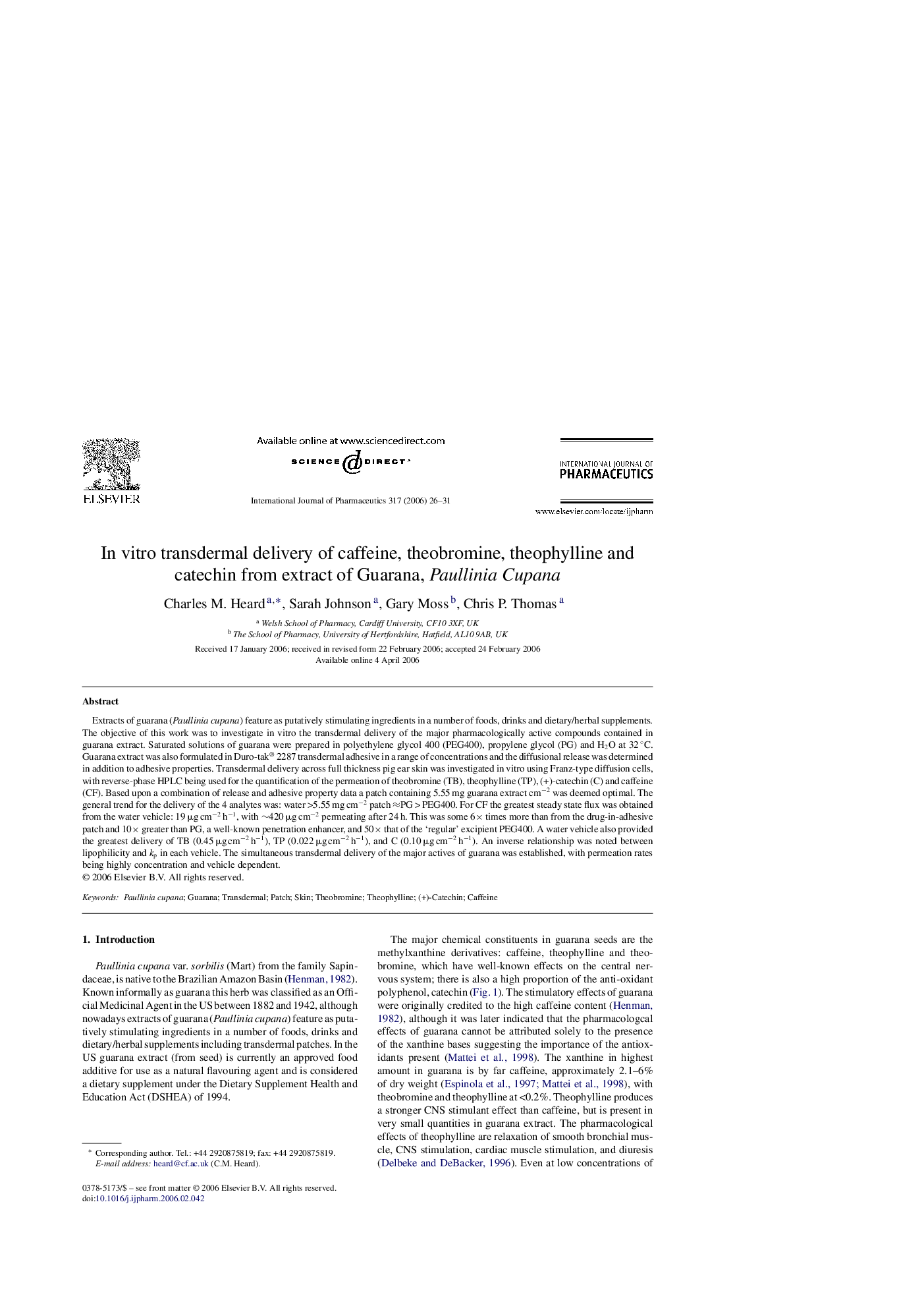| Article ID | Journal | Published Year | Pages | File Type |
|---|---|---|---|---|
| 2506820 | International Journal of Pharmaceutics | 2006 | 6 Pages |
Extracts of guarana (Paullinia cupana) feature as putatively stimulating ingredients in a number of foods, drinks and dietary/herbal supplements. The objective of this work was to investigate in vitro the transdermal delivery of the major pharmacologically active compounds contained in guarana extract. Saturated solutions of guarana were prepared in polyethylene glycol 400 (PEG400), propylene glycol (PG) and H2O at 32 °C. Guarana extract was also formulated in Duro-tak® 2287 transdermal adhesive in a range of concentrations and the diffusional release was determined in addition to adhesive properties. Transdermal delivery across full thickness pig ear skin was investigated in vitro using Franz-type diffusion cells, with reverse-phase HPLC being used for the quantification of the permeation of theobromine (TB), theophylline (TP), (+)-catechin (C) and caffeine (CF). Based upon a combination of release and adhesive property data a patch containing 5.55 mg guarana extract cm−2 was deemed optimal. The general trend for the delivery of the 4 analytes was: water >5.55 mg cm−2 patch ≈PG > PEG400. For CF the greatest steady state flux was obtained from the water vehicle: 19 μg cm−2 h−1, with ∼420 μg cm−2 permeating after 24 h. This was some 6× times more than from the drug-in-adhesive patch and 10× greater than PG, a well-known penetration enhancer, and 50× that of the ‘regular’ excipient PEG400. A water vehicle also provided the greatest delivery of TB (0.45 μg cm−2 h−1), TP (0.022 μg cm−2 h−1), and C (0.10 μg cm−2 h−1). An inverse relationship was noted between lipophilicity and kp in each vehicle. The simultaneous transdermal delivery of the major actives of guarana was established, with permeation rates being highly concentration and vehicle dependent.
